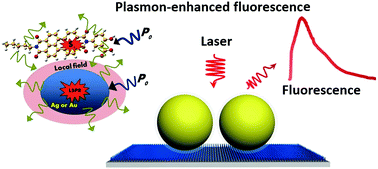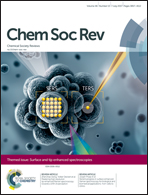Plasmon-enhanced fluorescence spectroscopy
Abstract
Fluorescence spectroscopy with strong emitters is a remarkable tool with ultra-high sensitivity for detection and imaging down to the single-molecule level. Plasmon-enhanced fluorescence (PEF) not only offers enhanced emissions and decreased lifetimes, but also allows an expansion of the field of fluorescence by incorporating weak quantum emitters, avoiding photobleaching and providing the opportunity of imaging with resolutions significantly better than the diffraction limit. It also opens the window to a new class of photostable probes by combining metal nanostructures and quantum emitters. In particular, the shell-isolated nanostructure-enhanced fluorescence, an innovative new mode for plasmon-enhanced surface analysis, is included. These new developments are based on the coupling of the fluorophores in their excited states with localized surface plasmons in nanoparticles, where local field enhancement leads to improved brightness of molecular emission and higher detection sensitivity. Here, we review the recent progress in PEF with an emphasis on the mechanism of plasmon enhancement, substrate preparation, and some advanced applications, including an outlook on PEF with high time- and spatially resolved properties.

- This article is part of the themed collections: Celebrating a Century of Excellency in Chemistry at Xiamen University and Surface and tip enhanced spectroscopies


 Please wait while we load your content...
Please wait while we load your content...